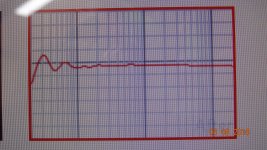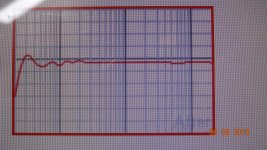I have been working on the DSP basis speaker for a while, and I would like to share a few things I discovered.
1. The sound of FIR digital filter is different between the product and algorithm. The difference is huge, and one is clearly better (subjectively) than the other. All IIR algorithm sound similar, but still different between products. Some products seem have more sophisticated algorithm, gain structure and dither, etc.
2. Longer impulse length is clearly better to me. albeit it causes huge latency. I set mine 131072 samples, and my i7 quad processor can't handle longer impulse than this.
3. I find FIR window function is the most important point for the sound quality of FIR. Rectangular and Nutshell sounds very different each other, for example, and all Nutshell doesn't sound the same. If window function is not set correctly, it sounds simply horrible. Most products come with with only one pre-configured window function, so all products sound very different each other accordingly.
I have tested 5 different VST plugin version of the filter / EQ products for music production and mastering. For DIYer, the most recommend solution is DMG audio Equilibrium. Weiss hardware EQ is probably the most popular FIR filter among professional mastering studio, but it costs like 10K, and AES/EBU connection only.
1. The sound of FIR digital filter is different between the product and algorithm. The difference is huge, and one is clearly better (subjectively) than the other. All IIR algorithm sound similar, but still different between products. Some products seem have more sophisticated algorithm, gain structure and dither, etc.
2. Longer impulse length is clearly better to me. albeit it causes huge latency. I set mine 131072 samples, and my i7 quad processor can't handle longer impulse than this.
3. I find FIR window function is the most important point for the sound quality of FIR. Rectangular and Nutshell sounds very different each other, for example, and all Nutshell doesn't sound the same. If window function is not set correctly, it sounds simply horrible. Most products come with with only one pre-configured window function, so all products sound very different each other accordingly.
I have tested 5 different VST plugin version of the filter / EQ products for music production and mastering. For DIYer, the most recommend solution is DMG audio Equilibrium. Weiss hardware EQ is probably the most popular FIR filter among professional mastering studio, but it costs like 10K, and AES/EBU connection only.
If one seeks the highest quality sound reproduction with DSP, one should do precise EQing with it. Very precise house EQ (room EQ) can dramatically improve the SQ of the speakers. The effect is surprising in my experience. My speaker sounds so much better compared to 3 months ago, simply due to more precise EQ. Learning curve is steep, though.
I think this is where DSP is way better than analog counterpart. DSP can do almost unlimited EQ points without destructing the SQ.
I think this is where DSP is way better than analog counterpart. DSP can do almost unlimited EQ points without destructing the SQ.
It is hard to get good off-axis slopes with good impulse or you need a horn tweeter for that. But I don't like horn sounding. I agree that there is possible to get better off-axis tw-mid but only if we lose with impulse response.For a big WMTMW design like yours, LR targets (0deg phase offset) are not optimum for good lobing. I think nobody would choose LR, let alone shallow LR2, for this.
Marlen et al. are talking about vertical lobing of different xo types. Vertical is part of radiated sound power but often neglected, horizontal directivity is so much easier to measure. However RTA or long distance-long gated measurements pick up total radiated power distributed in the room and caught by the microphone. Variations in it can be observed by moving the mic around in space (3D) during RTA-measurement (MMM-techique)
@KSTR:
Could you please elaborate on your statement about the unsuitability of LR 4 for WMTMW arrangements? I suppose you are suggesting BW3 is more suitable in rerms of lobing, as originally suggested by DÁppolito.
To my best of knowledge, Joe dÁppolito himself changed to 4th order acoustic LR from the Aria designs onward.
If memory serves me well,D' Appolito even designed a large and extravagant WWMMMTMMMWW with 4th order acoustic LR filters for Orca Designs. But I might be mistaken here.
Kind Regards,
Eelco
Could you please elaborate on your statement about the unsuitability of LR 4 for WMTMW arrangements? I suppose you are suggesting BW3 is more suitable in rerms of lobing, as originally suggested by DÁppolito.
To my best of knowledge, Joe dÁppolito himself changed to 4th order acoustic LR from the Aria designs onward.
If memory serves me well,D' Appolito even designed a large and extravagant WWMMMTMMMWW with 4th order acoustic LR filters for Orca Designs. But I might be mistaken here.
Kind Regards,
Eelco
Second-order Butterworth can be better than LR4 for WMTMW in this paper.
http://www.xlrtechs.com/dbkeele.com...ear Phase Digital Crossover Flters Part 1.pdf
http://www.xlrtechs.com/dbkeele.com...ear Phase Digital Crossover Flters Part 1.pdf
That's not 2nd order Butterworth, this was mislabelled in the graph. Actually the XO is 2nd order "constant voltage" (aka linear phase sum). 2nd oder Butterworth XO does not exist (that is, it has no flat sum, and when you EQ it to flat then you arrive at Linkwitz-Riley).Second-order Butterworth can be better than LR4 for WMTMW in this paper.
If one seeks the highest quality sound reproduction with DSP, one should do precise EQing with it. Very precise house EQ (room EQ) can dramatically improve the SQ of the speakers. The effect is surprising in my experience. My speaker sounds so much better compared to 3 months ago, simply due to more precise EQ. Learning curve is steep, though.
I think this is where DSP is way better than analog counterpart. DSP can do almost unlimited EQ points without destructing the SQ.
Do you have a thread about your project that goes a bit deeper into this precise EQ?
I can't figure out what you're talking about. Where's the precision coming from? How did you measure, where did you measure etc...
A lot of named crossovers pass in this thread as if that would be the magical key. It's no coincidence people like Danley and Geddes often say the named crossover isn't their goal. The one that get's the job done is important.
Naming the crossovers like this might make some people think all they need is the right black box that has the active crossover of their choice as a feature. While in reality it's the drivers acoustical slope that's important to get the right seamless hand off from one driver to the next. Now I know you guys know that, but not all of our readers get that from just naming the crossover names.
More often than not you don't need to set it to a specific named crossover in that black box to hit your true acoustical target slope. Just putting drivers into a box and setting the digital crossover to one of these named slopes isn't getting you that specific target slope.
Just wanted to make that part clear. Known by many I'm sure, but lets not forget that we do have other readers that might over simplify what you guys are talking about.
Naming the crossovers like this might make some people think all they need is the right black box that has the active crossover of their choice as a feature. While in reality it's the drivers acoustical slope that's important to get the right seamless hand off from one driver to the next. Now I know you guys know that, but not all of our readers get that from just naming the crossover names.
More often than not you don't need to set it to a specific named crossover in that black box to hit your true acoustical target slope. Just putting drivers into a box and setting the digital crossover to one of these named slopes isn't getting you that specific target slope.
Just wanted to make that part clear. Known by many I'm sure, but lets not forget that we do have other readers that might over simplify what you guys are talking about.
Yes. It should be noted that we always talk about acustic targets when talking about XO characteristics. Electrical filter function is whatever is needed to get there.
But even the acoustical target may no coincide with one of the known names/characterisitics, that has to be understood as well.
But even the acoustical target may no coincide with one of the known names/characterisitics, that has to be understood as well.
That's not 2nd order Butterworth, this was mislabelled in the graph. Actually the XO is 2nd order "constant voltage" (aka linear phase sum)
FYI, "constant voltage" doesn't necessarily imply a linear phase sum.
A standard LR2/LR4 crossover sums to a constant voltage result, but it it definitely not linear phase.
Dave.
Last edited:
In Small's original paper "constant voltage" refers to an XO with a sum of a real 1, not a complex 1 (allpass sum). And Horbach & Keele refer to that.
"Constant voltage" wasn't a good name selected by Small because it leads to confusion and almost nobody uses it today except the old-timers. "Linear Phase" or "Allpass-Free" is much better wrt the key point of this approach.
"Constant voltage" wasn't a good name selected by Small because it leads to confusion and almost nobody uses it today except the old-timers. "Linear Phase" or "Allpass-Free" is much better wrt the key point of this approach.
My approach is this way --- I start with low distortion drivers, add a 60 degree total dispersion, bi-amp two way and the correct over-all response in room with Audyssey Pro Here is my response at the listening location using JBL M2, a pair of Crown iT5000HD amps with built-in DSP X-over:


Now I am ready to listen to some HD mastered Downloads.
THx-RNMarsh


Now I am ready to listen to some HD mastered Downloads.
THx-RNMarsh
That's not 2nd order Butterworth, this was mislabelled in the graph. Actually the XO is 2nd order "constant voltage" (aka linear phase sum). 2nd oder Butterworth XO does not exist (that is, it has no flat sum, and when you EQ it to flat then you arrive at Linkwitz-Riley).
Than you for your clarification.
Do you have a thread about your project that goes a bit deeper into this precise EQ?
I can't figure out what you're talking about. Where's the precision coming from? How did you measure, where did you measure etc...
My room has very constant and low RT60 above 180Hz, so the result is reasonably consistent regardless of the distance of the microphone from the speaker, except low frequency. Low frequency is very tricky to determine the EQ setting, but once I understand what's is going on in the room, it was relatively straight forward. The studies of Floyd Toole and the others really helped.
- Status
- This old topic is closed. If you want to reopen this topic, contact a moderator using the "Report Post" button.
- Home
- Loudspeakers
- Multi-Way
- Any high quality active DSP speaker designs?